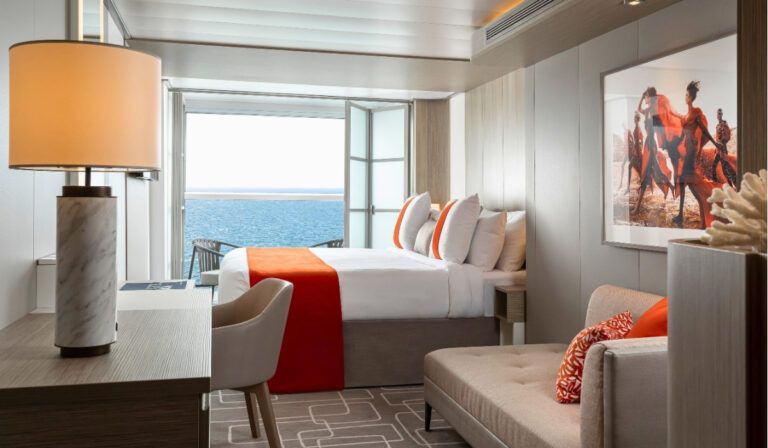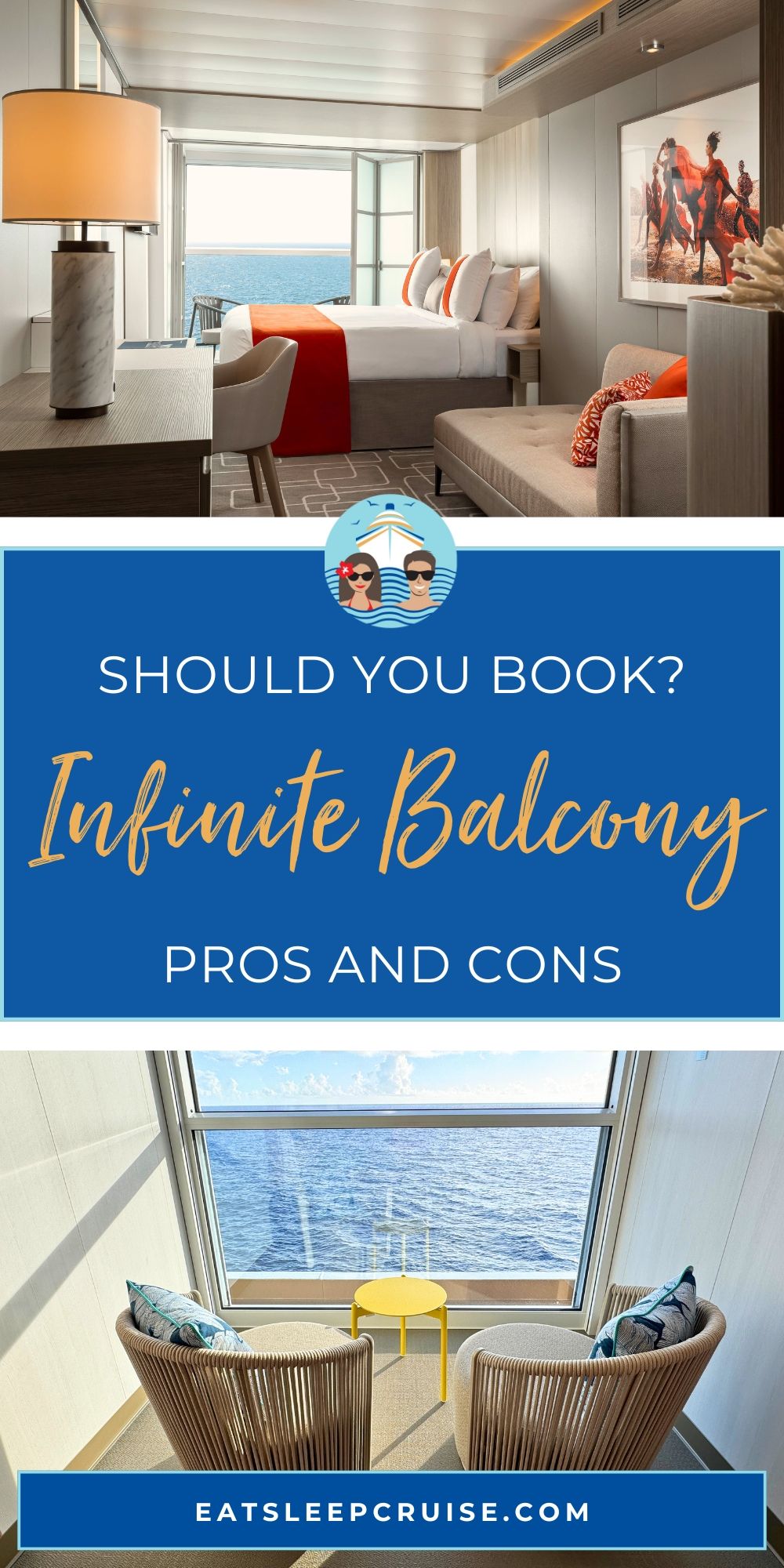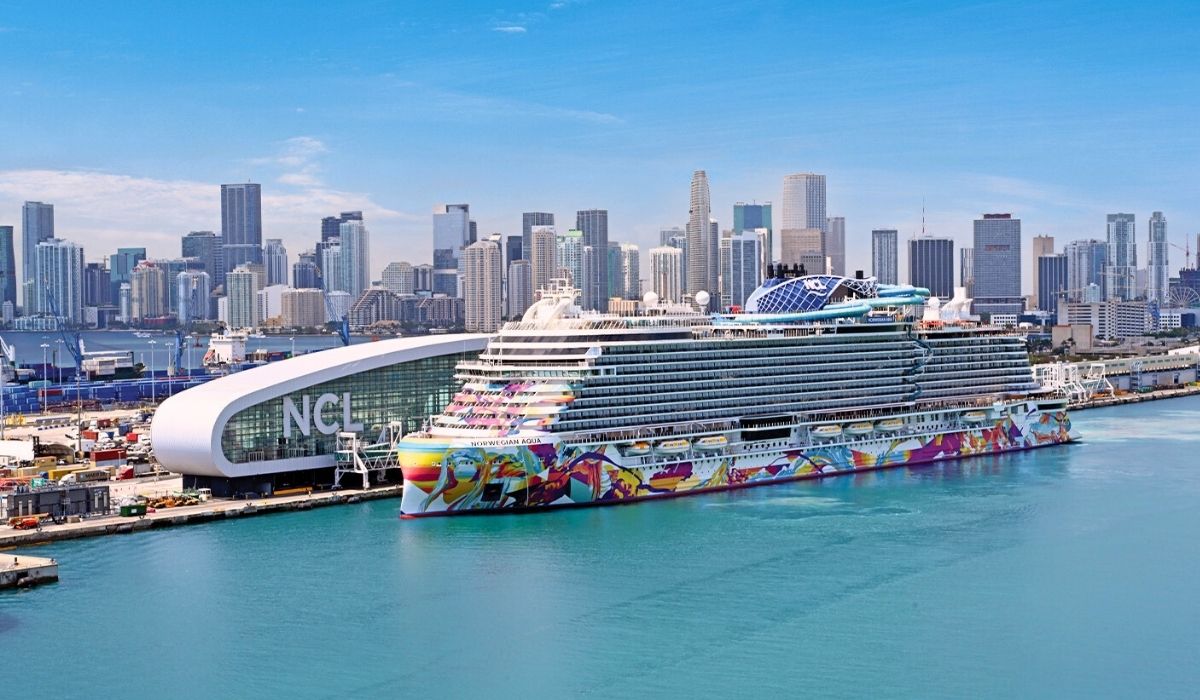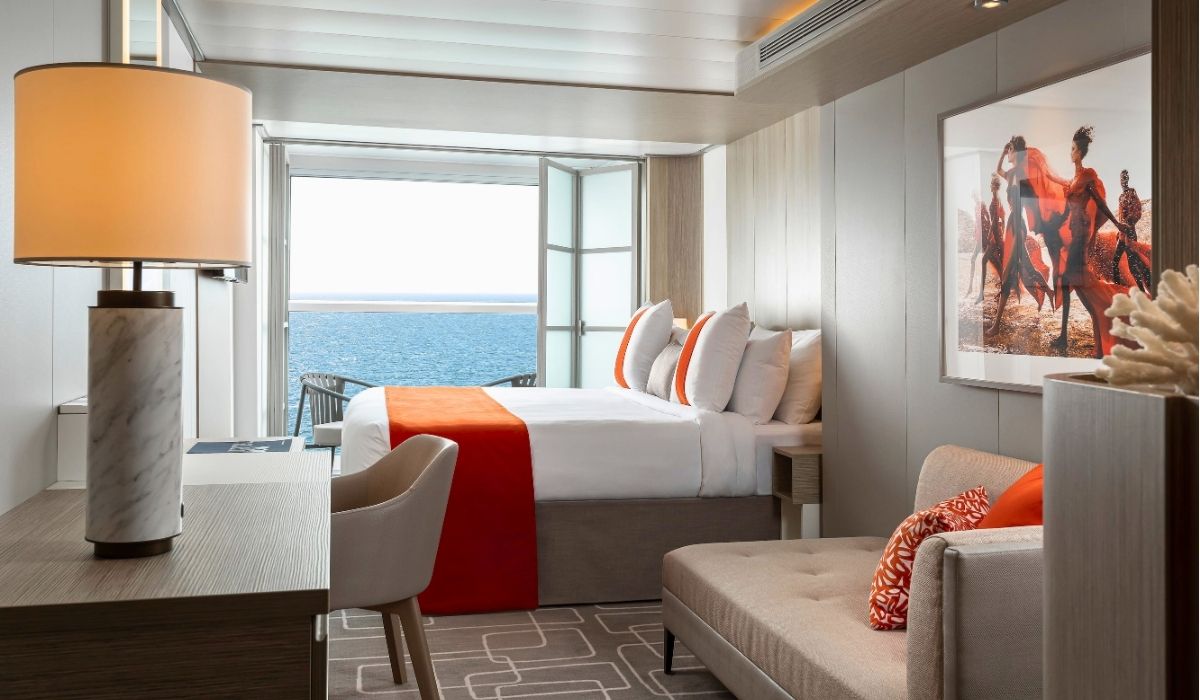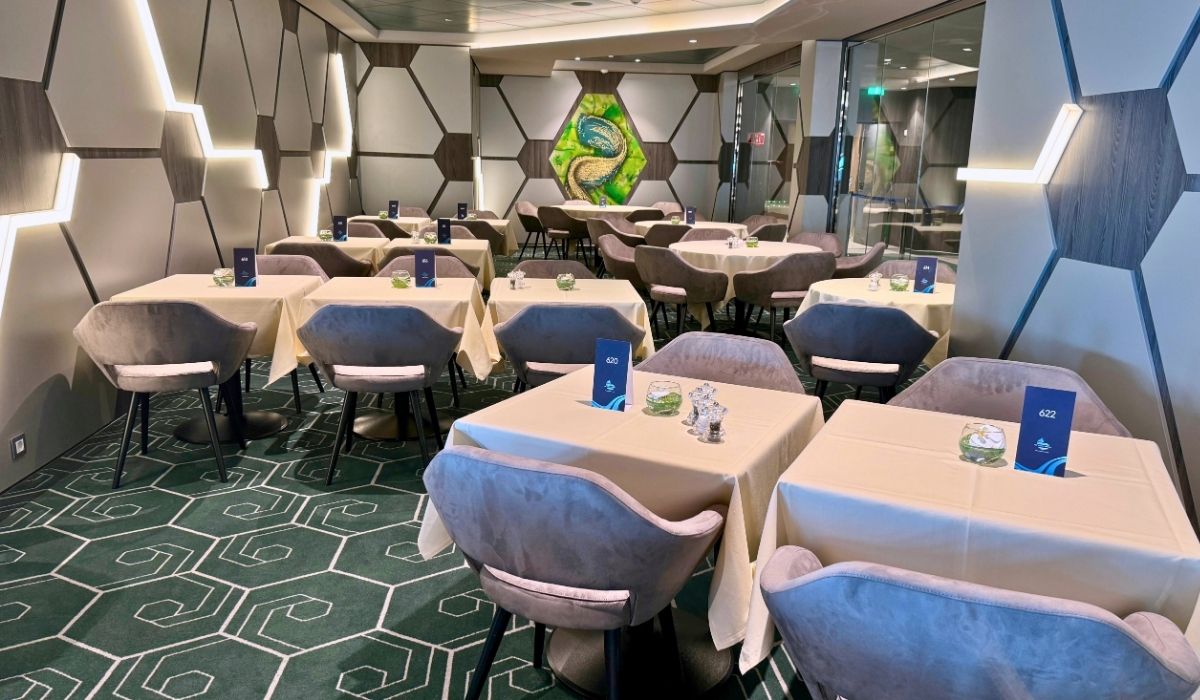The cruise industry has witnessed a revolutionary shift in cabin design with the introduction of infinite balcony concepts. This trend began with Celebrity Cruises’ Edge class in 2018 but now is starting to pop up on other cruise lines like Royal Caribbean’s Icon class, MSC’s World class, and even some expedition vessels like Atlas Ocean Voyages’ Horizon staterooms.
This infinite veranda is a reimagining of the traditional cruise balcony experience. But are infinite balconies worth the investment, and should you book one for your next cruise? We weigh in on the pros and cons of infinite balcony cabins, how they differ from traditional balcony cabins, and give our honest opinions on if they’re worth it.
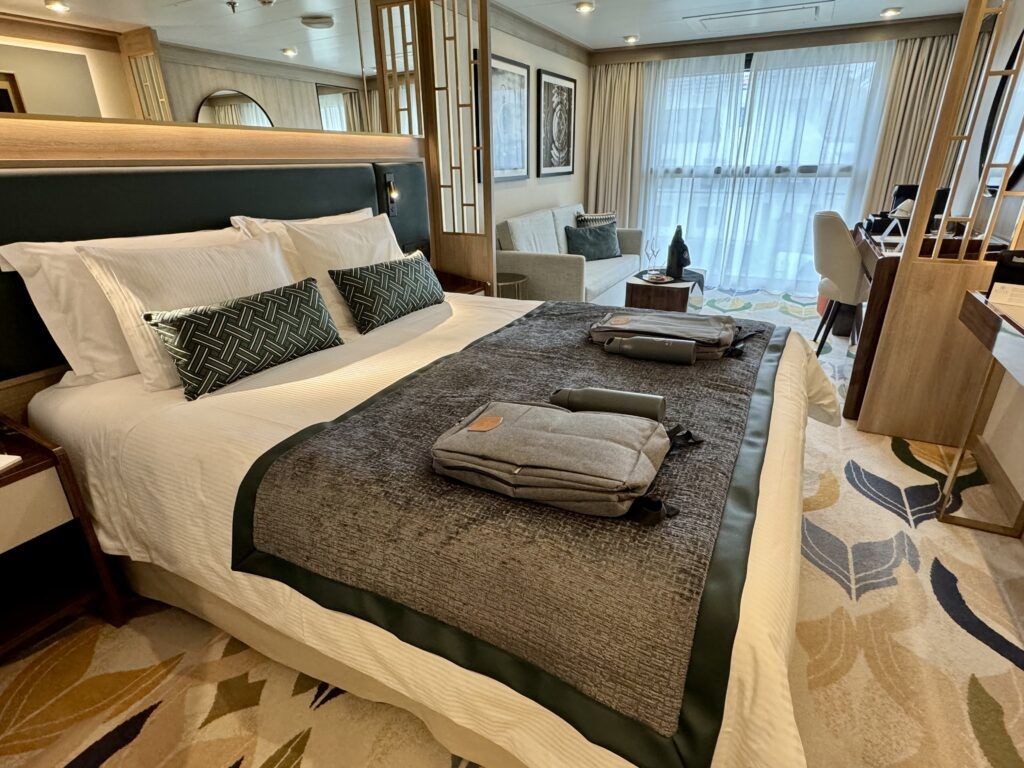
What Are Infinite Balconies?
In a nutshell, infinite balconies eliminate the physical outdoor balcony space and instead incorporate floor-to-ceiling windows that open to create an “infinite” connection between your room and the ocean.
Instead of a standard balcony stateroom with a sliding door that you step out of onto a private balcony area, Infinite Veranda cabins have a large window that opens at the touch of a button, creating what’s essentially an indoor-outdoor hybrid space. The goal? Bringing passengers closer to the water while maximizing usable interior space.
To some, these infinite veranda cabins may seem like just a room with a window, but they are a significant upgrade from a traditional ocean view room. Typically, these infinite balcony cabins have more square footage and are located on higher decks. The windows are larger as well with unobstructed views…and they actually open, unlike the small porthole windows often found in ocean view cabins.
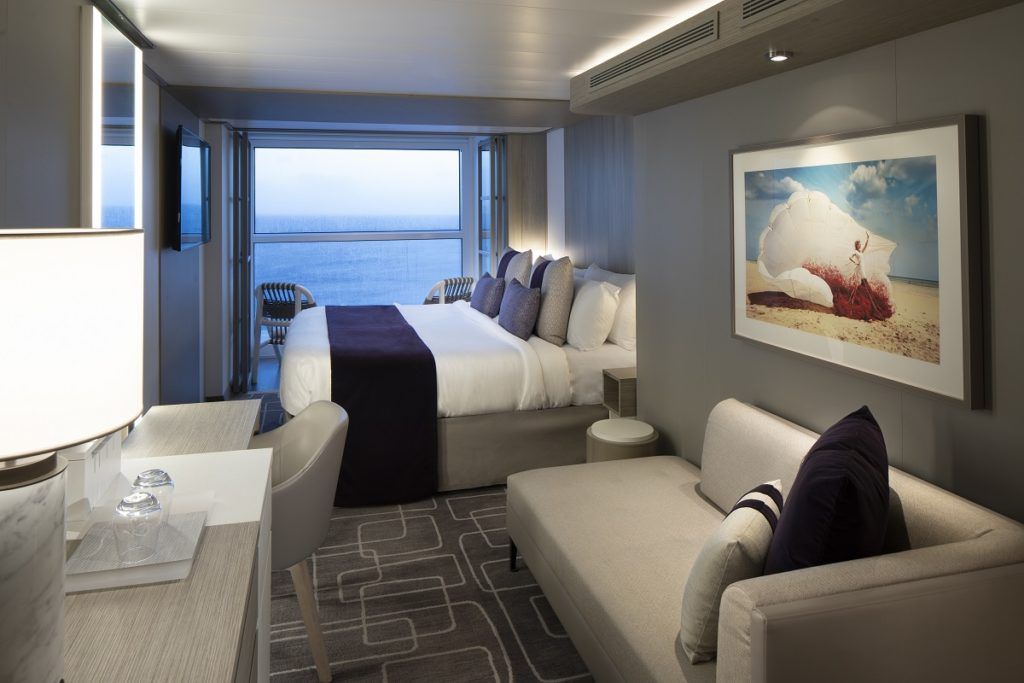
Should You Book an Infinite Balcony? The Key Differences From a Standard Balcony
The fundamental question facing cruisers is whether infinite balconies are “better” or provide more value than traditional designs. Here’s what you need to know:
Traditional Balcony Advantages:
True, Open Outdoor Space for Fresh Air and Ocean Breezes
Traditional balcony cabins provide an true outdoor experience that many cruisers cherish. You’ll be able to sit outdoors and have a glass of wine while reading a book in the afternoon or enjoy a morning coffee alongside scenic vistas. A traditional balcony offers the full sensory experience of being at sea with fresh air and ocean breezes as you sail from one destination to the next.
The ability to step completely outside offers a separation from the cabin’s interior, creating a genuine sense of being on the ocean. It’s also great for watching the ship sail into or out of port. In fact, many travelers consider a balcony an essential part of the cruise experience.
Ability to Enjoy Outdoor Time While Others Remain in Air-Conditioned Comfort
Traditional balconies excel in accommodating different preferences within the same cabin. One person can enjoy the fresh sea air and outdoor temperature while their cabinmate remains in climate-controlled comfort inside. This flexibility is crucial for couples or families with varying temperature tolerances, whether you’re sailing in warm destinations like the Caribbean or cooler climates like Alaska.
As long as the balcony door remains shut, the cabin’s air conditioning (or heat) will continue to run. This is in contrast to infinite balconies where the air conditioning shuts off as soon as you open the window.
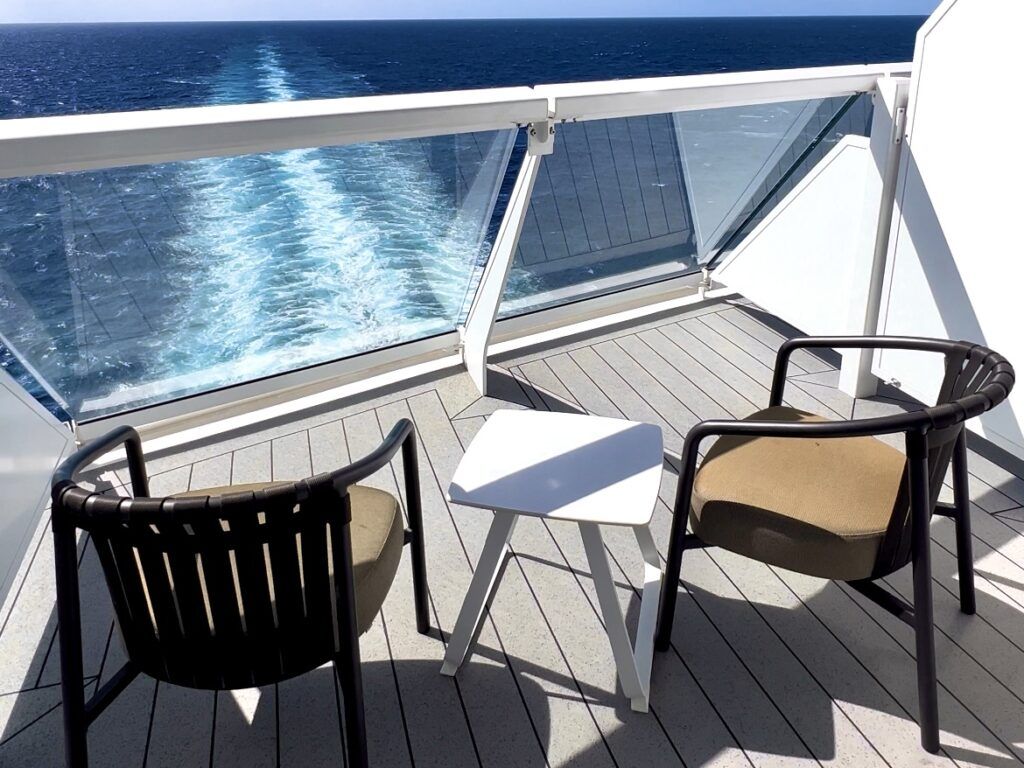
Traditional Door Provides Clear Separation and Sound Barrier
The sliding glass door in traditional balconies serves as an effective sound barrier. If your cabinmate is asleep, even opening the window a small distance is likely to wake them with infinite designs, whereas traditional setups allow you to quietly step outside without waking others.
The physical separation between the indoor and outdoor spaces also means that activities like phone calls, early morning coffee, or late-night relaxation on the balcony won’t disturb sleeping cabinmates.
Some Traditional Balconies Can Connect with Neighboring Rooms for Larger Groups
Many traditional balcony designs offer connecting balconies for families or groups traveling together. These connecting configurations allow larger parties to book adjacent cabins and have access to shared outdoor space, making them ideal for multi-generational travel or groups of friends.
This flexibility is lost with infinite designs, which cannot offer the same level of connectivity between cabin balconies.
Traditonal Balcony Disadvantages:
Less Total Interior Square Footage
Traditional balcony cabins allocate significant space to the outdoor balcony area, reducing the available interior living space. For instance, a standard balcony on Royal Caribbean’s Star of the Seas measures 204 square feet, with an approximate 50-foot balcony. In contrast, an Infinite Ocean View Balcony stateroom measures about 250 square feet, including what the cruise line refers to as an “expanded living area”.
For travelers who spend considerable time in their cabin or those who prefer more interior living space, this reduction in square footage can feel limited, especially during inclement weather when the balcony becomes unusable.
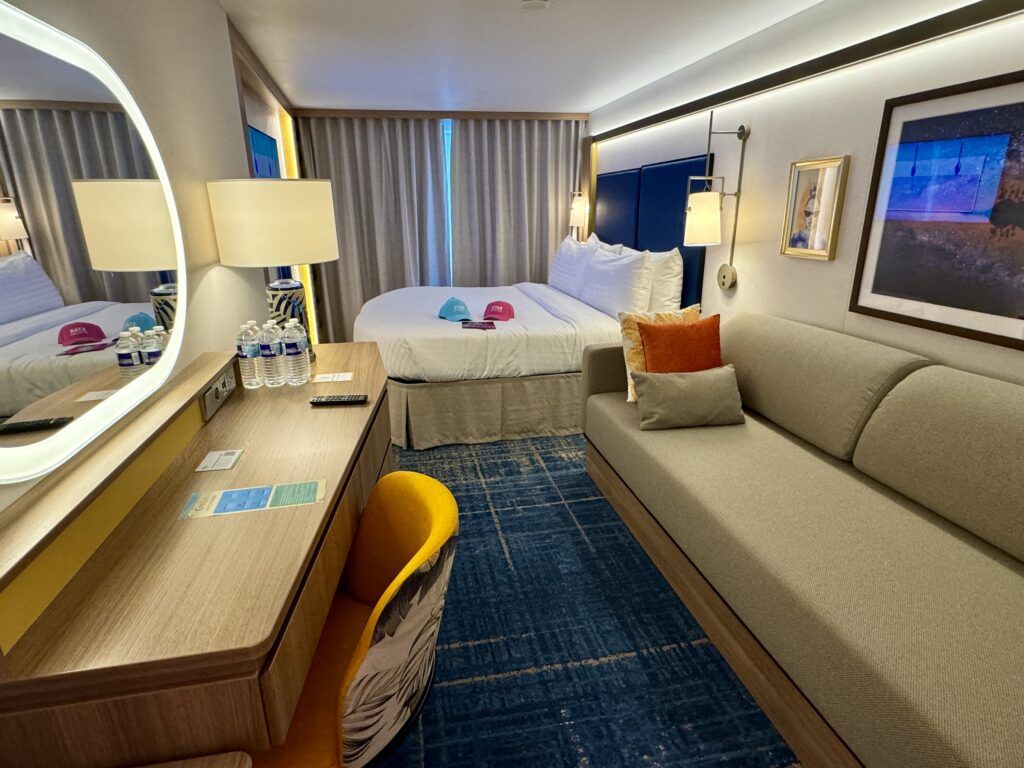
Traditional Balcony Dividers Provide Less Privacy
On the majority of cruise ships, balconies have dividers, rather than full walls in between them. This means that you can easily hear your neighbor’s conversation or even look directly onto their veranda if you lean over the railing just a bit. This lack of privacy can be particularly bothersome when neighboring balconies are occupied by loud guests.
Hearing conversations, music, or other activities on adjacent balconies can intrude on your private space, reducing the relaxation value of the outdoor area.
Less Interior Seating Options Compared to Expanded Infinite Layout
Traditional balconies typically feature minimal interior seating. The interior space often includes only a small desk area, a sofa or arm chair, and the bed, providing limited options for comfortable relaxation when the balcony isn’t usable.
There’s usually two patio chairs located on the outdoor balcony, which works well in good weather. However, this can leave the interior feeling cramped when weather forces everyone indoors, especially if you’re traveling with more than two people in the cabin.
Might Cause Safety Concerns for Parents with Small Children
Standard balcony setups might cause concerns for some parents, worrying that their kids could let themselves out onto the balcony and start dangerously climbing on the furniture. Traditional balconies require constant supervision of young children. However, infinite balcony designs might give you more peace of mind.
The infinite veranda setup makes it impossible to venture out onto a balcony unsupervised. The button to raise and lower the window is likely out of a small child’s reach as well.

Infinite Balcony Advantages:
More Interior Living Space with Multiple Seating Areas
Even though both staterooms encompass roughly the same square footage, the space in the infinite veranda is more versatile. If the weather takes a turn for the worse, you’ll have more interior living space to utilize and more indoor seating options.
The versatile layout allows couples or families to spread out more comfortably. This is particularly valuable on longer cruises or sea days when cabin time increases.
Partial Protection from the Outdoor Elements
Infinite balconies offer the best of both worlds by providing fresh air and ocean views while maintaining protection from wind, rain, and excessive sun exposure. If it’s raining or windy you wouldn’t want to be on a normal cruise ship balcony, but one benefit of a cabin like this is that you could still use this space regardless of the weather.
This weather protection extends the usability of the “balcony” space throughout various conditions, ensuring you can always enjoy ocean views and fresh air regardless of the weather outside. This is particularly useful in cooler climates with lots of scenic sailing like Alaska or the Norwegian fjords.

Enhanced Privacy vs. Traditional Balconies
The infinite veranda is more private than standard balconies on other cruise ships. You’ll likely never see or hear those in neighboring cabins who are also sitting by their windows. The infinite design eliminates the common privacy issues associated with traditional balcony dividers as well.
While some feel these infinite balconies are more closed off, others appreciate the enclosed nature of the space. Infinite balconies provide a more intimate and private experience, free from the sounds and sights of other guests.
Indoor/Outdoor Living Concept with Uninterrupted Views
Standard balconies are built with safety rails to prevent anyone from accidentally falling overboard. Oftentimes, the barrier is made of tinted glass or even metal! And while they serve an important purpose, they can partially obstruct your view of the ocean, especially if you are sitting down. Infinite verandas effectively eliminate this issue since your entire wall is a clear glass window.
The floor-to-ceiling glass design provides panoramic ocean views from anywhere in the cabin, creating an immersive indoor/outdoor living space that traditional balconies cannot match. This design particularly benefits guests who spend significant time relaxing in their cabin.
Infinite Balcony Disadvantages:
No True Outdoor Space – You’re Always Technically Inside
Because infinite verandas offer, well, infinite views of the ocean, you won’t be able to actually go outside since the “balcony” is actually just a floor-to-ceiling window. For travelers who value the authentic outdoor experience of being on a ship’s deck, this limitation can be significant.
While you’ll still get fresh air when you lower the window, unlike if you were staying in a standard ocean view room, it is not the same as physically being outside. The infinite balcony designs definitely feel more closed off than traditional balconies.
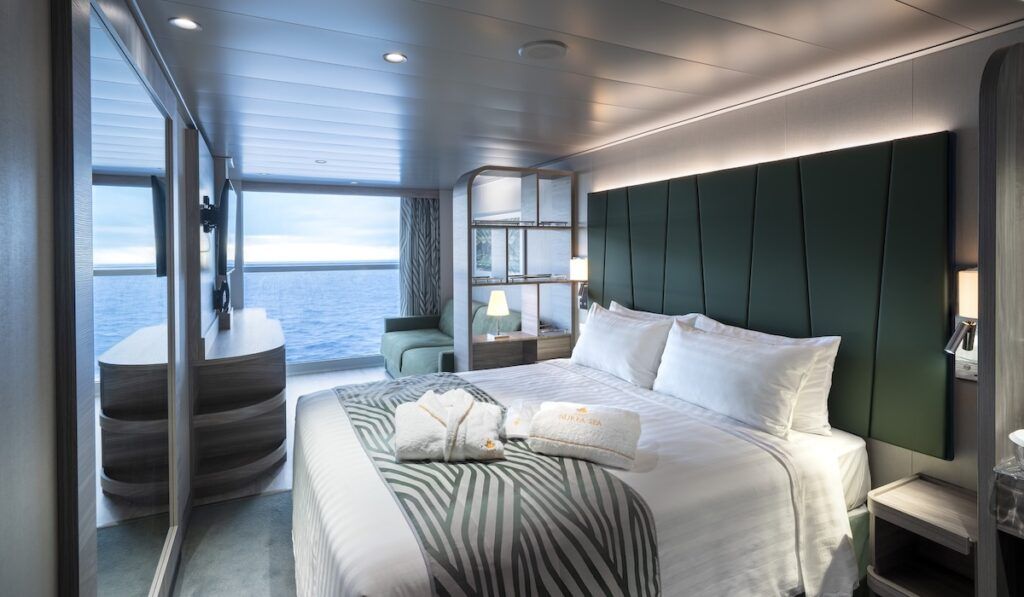
Air Conditioning Shuts Off When Window Opens
When you decide you want to open the window, your AC in the cabin will automatically shut off. This automatic system can be problematic in warm climates where you want fresh air but also need cooling, forcing guests to choose between the two.
In Caribbean cruising, where cabin temperatures can rise quickly, this limitation can make the room uncomfortable within minutes of opening the window, particularly during midday hours when the sun is strongest. For others, the cooler temperatures in Alaska might make the cabin too chilly when the window is open.
Less Flexibility for Couples with Different Routines
The glass window (and in some cases also the electric blinds) are quite noisy to open. If your cabin mate is asleep, even opening the window a small distance is likely to wake them. Unlike traditional balconies where one person can quietly slip outside for a morning coffee or retreat to bed after stargazing in the evening, infinite designs require noisy mechanisms to operate them.
If you’re hoping to have a little escape from your cabinmates, you will have to physically leave the stateroom, as there isn’t any kind of solid door separating the two spaces. The shared nature of the space means that opening the window or blinds affects the entire cabin environment.
Captain Can Disable Function in Certain Weather Conditions
During rough weather or safety concerns, the ship’s captain can disable the window opening function remotely in infinite veranda staterooms.
This override capability, while necessary for safety, can leave guests feeling trapped in their cabin during extended periods of bad weather, with no means of accessing fresh air or outdoor ambiance. After all, this is the reason you booked a balcony cabin instead of an inside room or an ocean view room.
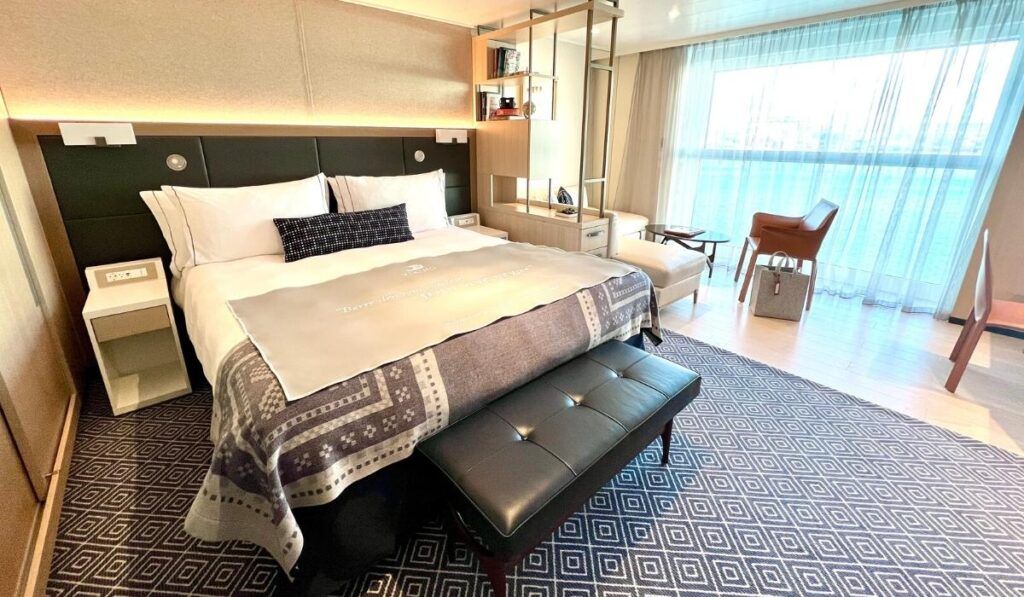
Are Infinite Balconies Worth It? The Bottom Line
Choose Infinite Balconies If You:
- Prioritize interior living space and versatility over outdoor access
- Cruise in cooler climates or during shoulder seasons where outdoor time is limited
- Value privacy and uninterrupted ocean views from anywhere in the cabin
- Prefer weather protection while still accessing fresh air and views
- Travel with young children and appreciate the added safety
- Spend significant time in your cabin and want multiple seating areas
Stick with Traditional Balconies If You:
- Value outdoor time and the separation a balcony provides between interior and exterior spaces
- Have different temperature preferences within your travel group
- Prefer the ability to use the balcony without waking cabinmates
- Want the flexibility to connect outdoor space with neighboring cabins for larger groups
- Like the option of having room service outdoors on a balcony
- Cruise primarily in warm weather destinations where you’ll use the outdoor space frequently

Cost Considerations and Booking Tips
Balcony cabins are the most popular cabin type, offering access to more living space, along with sunset views and ocean breezes from your private veranda. These accommodations are more affordable than fancy suites, but can cost as much as 50% to 100% more than interior cabins.
Infinite balconies are typically priced similarly to traditional balcony cabins, with prices usually differing based more on location, size, and cabin category rather than the infinite balcony feature itself.
The value proposition depends heavily on your cruising style and destination. For cruises in warm climates, traditional balconies often provide better functionality. For longer cruises, cooler destinations, or travelers who spend more time in their cabin, infinite balconies can offer better value through increased interior space and weather protection.
Our Verdict: Traditional Balconies Still Win
While we can appreciate the innovative design and additional space of the infinite balcony, we personally prefer the traditional balcony setup. The ability to step outside onto a true balcony while maintaining climate-controlled interior space provides the flexibility we value most.
As the cruise industry continues to innovate, infinite balconies represent an evolution in cruise ship design. They’re not automatically better or worse than traditional balconies; they’re simply different. They have distinct advantages and disadvantages that appeal to different types of cruisers. Ultimately, the decision comes down to personal preference and how you plan to use your cabin space.
Comments
What are your thoughts on infinite balcony cabins on cruise ships? Do you prefer these infinite veranda options to traditional balconies? Drop us an anchor below to share your cruise cabin preferences.


